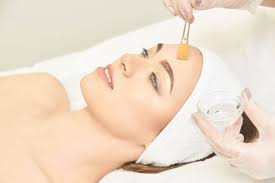
Rejuvenate Your Skin with Chemical Peels: A Comprehensive Overview
Chemical peels have emerged as a popular cosmetic procedure, offering individuals a non-invasive solution to various skin concerns. From acne scars to sun damage, these treatments have gained recognition for their ability to rejuvenate the skin, leaving it smoother, clearer, and more youthful. In this article, we delve into the world of chemical peels, exploring their types, benefits, application, and considerations.
Understanding Chemical Peels:
chemical peels involve the application of a chemical solution to the skin, which induces controlled exfoliation and peeling of the outermost layers. This process stimulates cell turnover and collagen production, resulting in a range of aesthetic improvements. Chemical peels can be tailored to address specific skin concerns, including:
1. Acne: Peels containing salicylic acid or glycolic acid can effectively unclog pores, reduce inflammation, and improve acne breakouts.
2. Hyperpigmentation: Peels with ingredients like kojic acid or lactic acid can fade dark spots and even out skin tone.
3. Fine Lines and Wrinkles: Deeper peels containing trichloroacetic acid (TCA) or phenol can stimulate collagen production, reducing the appearance of wrinkles and fine lines.
4. Sun Damage: Peels can remove sun-damaged skin cells, revealing healthier, more radiant skin underneath.
Types of Chemical Peels:
Chemical peels are classified based on their depth of penetration and the ingredients used:
1. Superficial Peels: These peels target the outermost layer of the skin (epidermis) and use mild acids such as alpha hydroxy acids (AHAs) or beta hydroxy acids (BHAs). They provide gentle exfoliation and require minimal downtime.
2. Medium Peels: Medium-depth peels penetrate the outer and middle layers of the skin (dermis) and often contain TCA or a combination of acids. They offer more significant results than superficial peels but may require a longer recovery period.
3. Deep Peels: Deep peels penetrate deeply into the dermis and are typically performed using phenol. They provide dramatic improvements in skin texture and appearance but carry a higher risk of complications and require careful monitoring.
Application and Aftercare:
Chemical peels are usually performed in a dermatologist’s office or a skincare clinic. The procedure involves cleansing the skin thoroughly before applying the chemical solution. Depending on the type of peel and the desired results, the solution may be left on the skin for a few minutes to half an hour. During the treatment, patients may experience a tingling or burning sensation, which subsides after the peel is neutralized or removed.
After a chemical peel, proper aftercare is crucial to promote healing and minimize complications. This may include:
• Avoiding sun exposure and wearing sunscreen daily to protect the skin from UV damage.
• Using gentle skincare products and moisturizers to soothe and hydrate the skin.
• Avoiding picking or scratching at the treated area to prevent infection and scarring.
Benefits of Chemical Peels:
Chemical peels offer a range of benefits for the skin, including:
1. Improved Skin Texture: Peels promote exfoliation, resulting in smoother, softer skin.
2. Reduced Acne: Peels unclog pores and reduce acne breakouts, leading to clearer skin.
3. Even Skin Tone: Peels fade dark spots and pigmentation, resulting in a more even complexion.
4. Youthful Appearance: Deeper peels stimulate collagen production, reducing the appearance of wrinkles and fine lines.
Risks and Considerations:
While chemical peels can yield significant improvements in skin quality and appearance, they are not without risks. Potential side effects include:
1. Redness and Irritation: Mild redness and irritation are common after a peel, especially with deeper peels.
2. Sensitivity to Sun: Skin becomes more sensitive to sunlight after a peel, increasing the risk of sunburn and hyperpigmentation.
3. Infection: Improper application or inadequate aftercare can lead to infection or scarring.
4. Unpredictable Results: Deeper peels carry a higher risk of complications and may not be suitable for all skin types.
Conclusion:
Chemical peels are versatile treatments that can address a variety of skin concerns, from acne to aging signs. However, it’s essential to consult with a qualified dermatologist to determine the most suitable peel for your skin type and concerns. With proper care and professional guidance, chemical peels can be an effective tool in achieving smoother, healthier-looking skin.